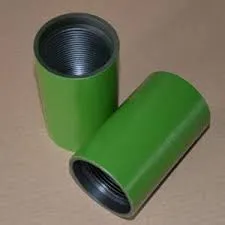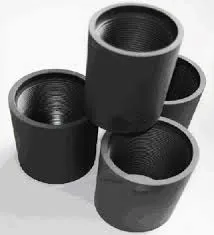Feb . 16, 2025 05:07
Back to list
pup joint pipe
Pup joint pipes are integral components used extensively in the oil and gas industry, serving as a crucial element in drilling, production, well testing, and well intervention operations. Their primary utility lies in adjusting the length of the drill string, which makes them indispensable for operations requiring high precision and customization. Pup joints come in various lengths and sizes, which offers unmatched flexibility in the rig setup process. Below, we'll delve deeper into what makes pup joint pipes paramount in oil and gas exploration and production.
Furthermore, advancements in technology have introduced enhancements in pup joint pipe designs. Modern pup joints are often coated with specialized anti-corrosive and anti-fouling materials that further extend their operational life. This is crucial in subsea operations where exposure to seawater could shorten the lifespan of less protected equipment. By utilizing state-of-the-art coatings, operators can ensure longer service periods and reduced maintenance costs, contributing significantly to the overall efficiency of their operations. The role of pup joint pipes in well intervention cannot be overstated. During workovers or maintenance routines, they allow for seamless access to well components that require adjustments or replacements. Their ease of use and installation facilitates rapid interventions, keeping the downtime to a minimum and ensuring that production is resumed swiftly. This aspect is of significant economic importance, as minimizing non-productive time directly correlates to enhanced operational profitability. Lastly, the trustworthiness of pup joint pipes is underpinned by their compliance with international manufacturing standards and the rigorous testing they undergo. Manufacturers subject these pipes to exhaustive quality checks, including hydrostatic tests, non-destructive testing (NDT), and other industry-specific evaluations. The superiority of pup joints lies in meeting these stringent quality assurances, making them a reliable component in the high-stakes environment of oil and gas operations. In summary, pup joint pipes are indispensable for their flexibility, durability, and reliability in the oil and gas industry. They facilitate the fine-tuning of drilling and production setups, withstand harsh operational environments, and contribute to the overall safety and efficacy of well operations. As oil and gas extraction methods continue to evolve, the role of high-quality, meticulously engineered components like pup joint pipes becomes even more critical, ensuring that operations are conducted safely, efficiently, and economically.


Furthermore, advancements in technology have introduced enhancements in pup joint pipe designs. Modern pup joints are often coated with specialized anti-corrosive and anti-fouling materials that further extend their operational life. This is crucial in subsea operations where exposure to seawater could shorten the lifespan of less protected equipment. By utilizing state-of-the-art coatings, operators can ensure longer service periods and reduced maintenance costs, contributing significantly to the overall efficiency of their operations. The role of pup joint pipes in well intervention cannot be overstated. During workovers or maintenance routines, they allow for seamless access to well components that require adjustments or replacements. Their ease of use and installation facilitates rapid interventions, keeping the downtime to a minimum and ensuring that production is resumed swiftly. This aspect is of significant economic importance, as minimizing non-productive time directly correlates to enhanced operational profitability. Lastly, the trustworthiness of pup joint pipes is underpinned by their compliance with international manufacturing standards and the rigorous testing they undergo. Manufacturers subject these pipes to exhaustive quality checks, including hydrostatic tests, non-destructive testing (NDT), and other industry-specific evaluations. The superiority of pup joints lies in meeting these stringent quality assurances, making them a reliable component in the high-stakes environment of oil and gas operations. In summary, pup joint pipes are indispensable for their flexibility, durability, and reliability in the oil and gas industry. They facilitate the fine-tuning of drilling and production setups, withstand harsh operational environments, and contribute to the overall safety and efficacy of well operations. As oil and gas extraction methods continue to evolve, the role of high-quality, meticulously engineered components like pup joint pipes becomes even more critical, ensuring that operations are conducted safely, efficiently, and economically.
Next:
Latest news
-
Tubing Crossover - API Compatible, Custom Sizes, In StockNewsNov.10,2025
-
Tubing Coupling | High-Strength, Leak-Proof Steel CouplingsNewsNov.10,2025
-
Wholesale API Threading Casing Coupling | API 5CT, Fast ShipNewsNov.10,2025
-
Pup Joint Supplier | API Certified, Custom, Quick ShipNewsNov.10,2025
-
Pup Joint Manufacturers | Precision Machined, Fast DeliveryNewsNov.10,2025
-
Tubing Coupling | Precision Steel, Leak-Proof, Fast DeliveryNewsNov.03,2025
Related Products







